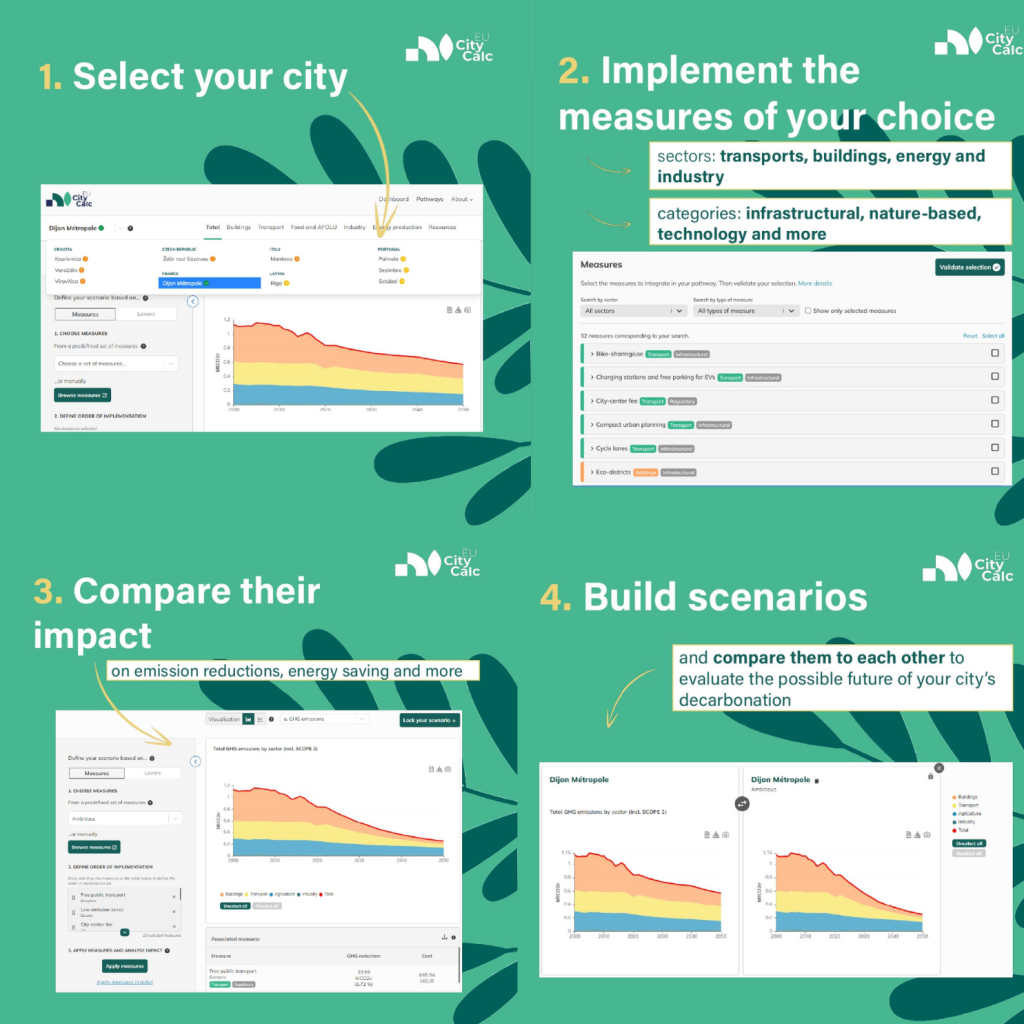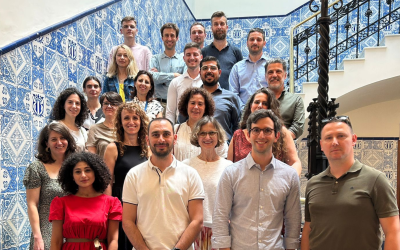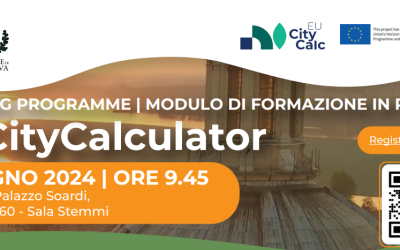Unlocking the sustainable potential through data-driven decision making and collaborative planning
The European City Calculator is a platform that enables cities to simulate and share their climate and energy transition scenarios.
EU City Calculator supports the design of low-carbon pathways at a city level. It provides an easy-to-use interface enabling administrations and other stakeholders to assess the implications and trade-offs related to each choice. The webtool allows municipalities to develop different transition scenarios by activating measures or levers in transport, buildings as well as industry and compare the impacts of these different scenarios. For example, how much GHG emissions can be saved in the building sector via improvements in energy retrofitting versus renewable energy expansion?
In essence, EU City Calculator is a webtool designed to help cities in their decision-making and implementation of their climate strategy by allowing them to visualise and simulate transition scenarios. Moreover, it facilitates the development of a shared vision by providing a common basis for the different stakeholders of a municipality.
Finally, cities benefit from taking their place in the debate on climate change. The webtool allows them to better perceive the extent of their field of action and to identify the levers on which the action of other levels of governance (national, EU) is essential.

What makes it unique?
EU City Calculator is based on a robust model that has existed for more than 10 years and has been developed in close interaction with cities to best support them in their development of a climate strategy.
The webtool has a robust model behind, therefore it allows to account for the evolution of energy and emission drivers at different levels of governance, as well as consider the link between the actions that may be leveraged by the cities. This correlation between the actions is a key point of the model which is not present in the classical monitoring webtool currently available. The model behind is comprehensive. By being built on a system view with strong cross-sector interactions, it can cover issues within the city (e.g. building renovation and transport challenges), and also connect it to all the activities supplying the cities from outside their border. It is also built with both the short- and long-term perspective in mind, thereby ensuring that cities can define their action plan for the next years in light of long-term challenges.
The webtool was designed to be used by a wide range of stakeholders to support the co-creation of transition pathways and policy scenarios, and to visualize their implications for cities. Users can assess the impact of a series of concrete measures in different sectors (city center fee, expand district heating) on the fly thanks to an easy-to-use interface. Depending on their resources and their interest, they will be able to specify their scenarios with complexity on demand, by delving into the measures and levers closest to their daily issues. It is also intuitive and allows everyone to connect, explore existing scenarios and easily create new ones.
Interested to learn more?
Don’t miss our free learning programme starting on 26 February to discover:
- How to engage local stakeholders and run co-creation workshops to define challenges and find solutions.
- How to make the most of this open-source modelling webtool and gather the data needed.
- The importance of actively being involved in your national policy-making process.
Sign up to join the training!











